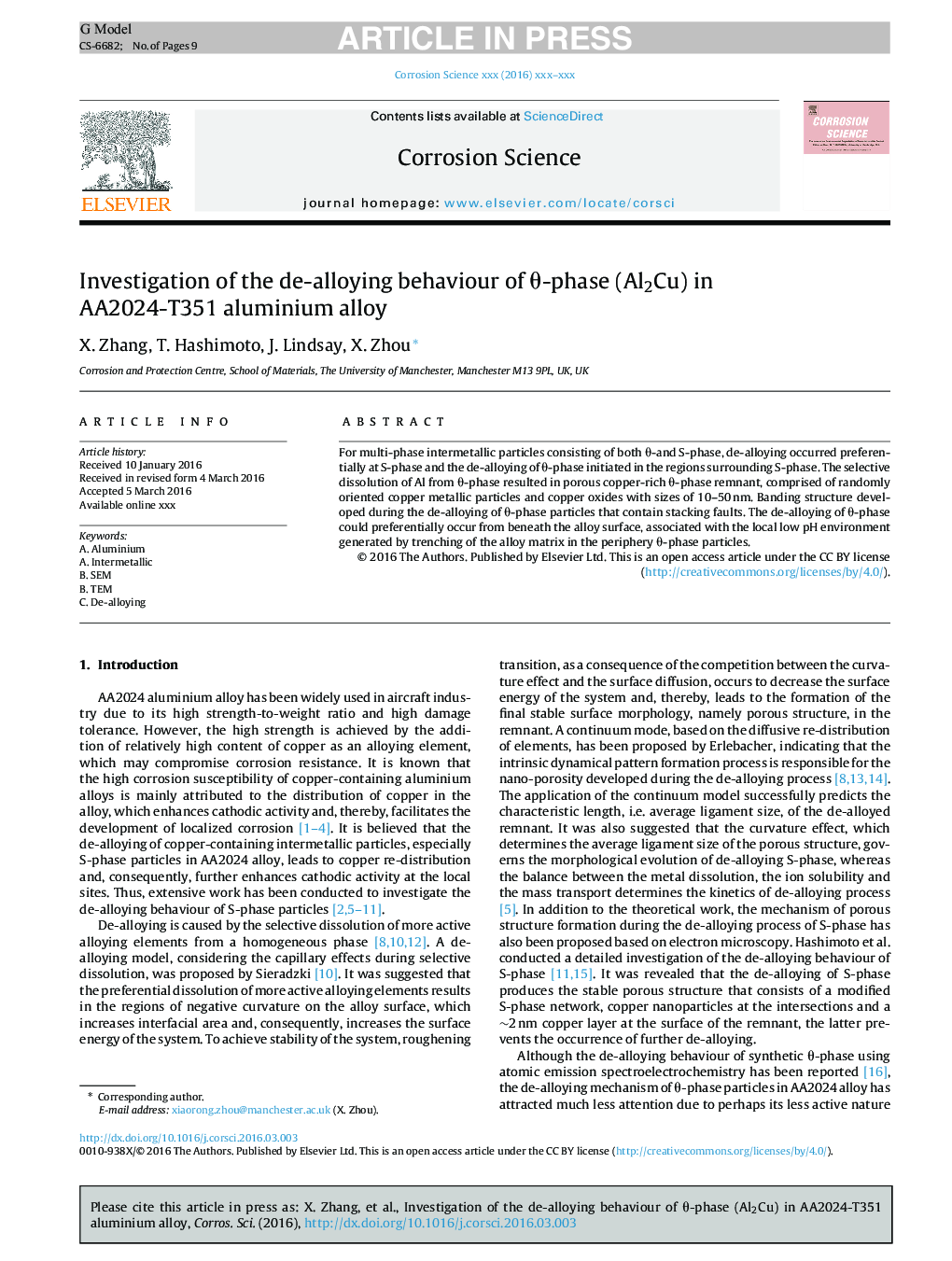| Article ID | Journal | Published Year | Pages | File Type |
|---|---|---|---|---|
| 7894445 | Corrosion Science | 2016 | 9 Pages |
Abstract
For multi-phase intermetallic particles consisting of both θ-and S-phase, de-alloying occurred preferentially at S-phase and the de-alloying of θ-phase initiated in the regions surrounding S-phase. The selective dissolution of Al from θ-phase resulted in porous copper-rich θ-phase remnant, comprised of randomly oriented copper metallic particles and copper oxides with sizes of 10-50 nm. Banding structure developed during the de-alloying of θ-phase particles that contain stacking faults. The de-alloying of θ-phase could preferentially occur from beneath the alloy surface, associated with the local low pH environment generated by trenching of the alloy matrix in the periphery θ-phase particles.
Related Topics
Physical Sciences and Engineering
Materials Science
Ceramics and Composites
Authors
X. Zhang, T. Hashimoto, J. Lindsay, X. Zhou,
